With increasing pollution and fuel prices, it has become a dire need to switch to a cleaner mode of transport. This has led to car makers starting investing research and capital in the electric vehicle segment. But how exactly does an electric vehicle work? Are there different types of motors used? Are there types of electric vehicles too? If you have these questions in your mind, you are the right place. Let’s decode the electric revolution.
How Does An Electric Vehicle Work?
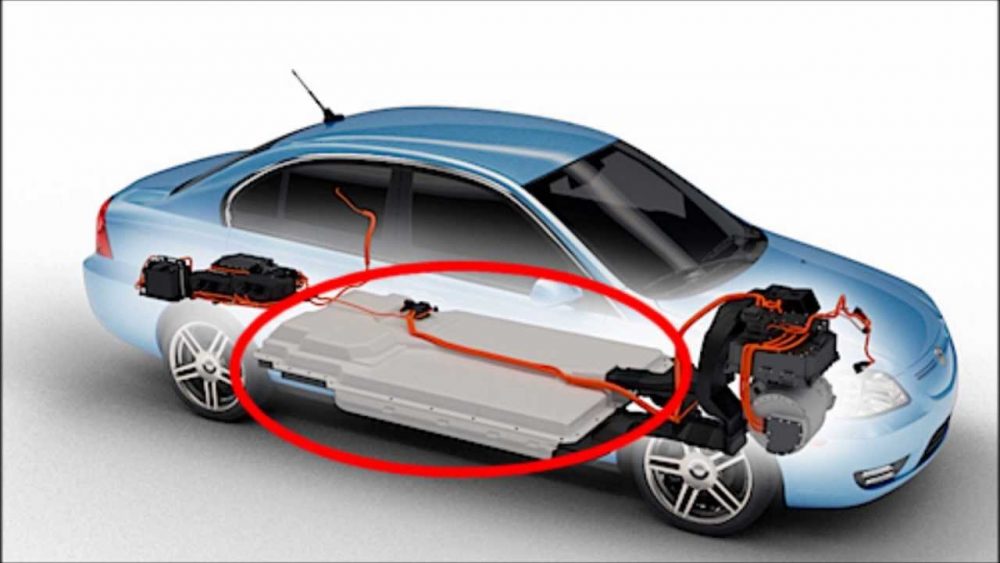
An electric vehicle works on a basic principle of science: conversion of energy. Electrical energy is converted into mechanical energy. There is a motor used in the electrical system to carry on this duty of conversion. Motors can be of various types. The motor is to an electric vehicle what engine is to the IC vehicle. Let’s have a look at different types of motors used in EVs.
Types of Electric Motors
There are various types of motors that are used in electric vehicles nowadays:
-
DC Series Motor
It was a widely used motor back in the 1990s. This motor is capable of producing high initial torque. The easy speed control and sudden load increase bearing capacity make these motors a good choice. But the high maintenance due to the brushes and commutators is a major drawback in the DC series motor which are also known as Brushed DC Motors. These motors are still in use by the Indian railways.
-
Brushless DC Motor (BLDC)

BLDC used in Aether Scooters These motors are the technically advanced versions of DC series motors. They don’t use brushes and commutators. Instead, permanent magnets are used. BLDCs have high starting torque, high efficiency and low maintenance. BLDCs are widely used these days either as the hub motor or belt-driven.
-
Permanent Magnet Synchronous Motor (PMSM)
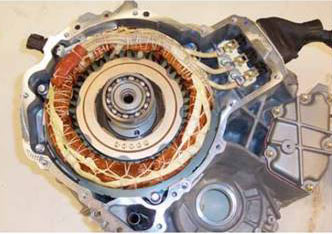
PMSM in Toyota Prius It is very similar in construction to the BLDCs. But the major difference is in the back emf. PMSM has a sinusoidal back emf whereas BLDC has trapezoidal one. They have a high power rating and can be used in high-performance applications such as sports cars, buses etc. For eg. Nissan Leaf uses a PMSM for propulsion.
-
Three Phase Induction Motor
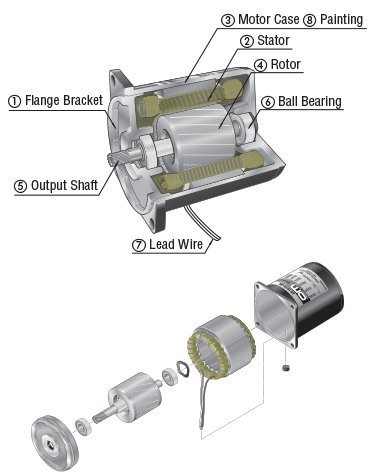
Induction Motor in electric vehicles Unlike the DC motors, induction motors don’t have a high starting torque. It is cheap as compared to the other available options. But don’t go with the price. It still has very high efficiency and can withstand rugged environmental conditions. Tesla Model S uses this type of motor. Even Tata and TVS are planning to use induction motors in their electric vehicles. Indian Railways have also started using induction motors over DC motors.
But where does the electric motor get its power from?
The answer is simple, from a battery. Duh! But what’s interesting to know is that there are different types of batteries too. Let’s compare the types on some basic parameters related to batteries.
| Parameters | Lithium-ion | Nickel-metal | Lead-acid | Ultracapacitors |
| Low Cost | ✔ | ✖ | ✔ | ✖ |
| Energy efficient | ✔ | ✔ | ✔ | ✔ |
| Temp. Performance | ✔ | ✖ | ✖ | ✔ |
| Low Weight | ✔ | ✔ | ✔ | ✔ |
| Life Cycle | ✔ | ✖ | ✔ | ✖ |
Lithium-ion batteries are used commonly because they are reliable, easy to use, cheaper, energy-efficient.
I see different types of Electric Vehicles! What are they?
You must have come across different types of electrics in the market. Some are fully electric while some are electric with ic engines. So what exact categories do they fall into? The electric vehicles are differentiated into three basic categories: Battery Electric Vehicles(BEV), Plug-in Hybrid Electric Vehicle(PHEV) and Hybrid Electric Vehicle(HEV). Let’s dive deeper into the world of types of electric vehicles.
-
Battery Electric Vehicle (BEV)
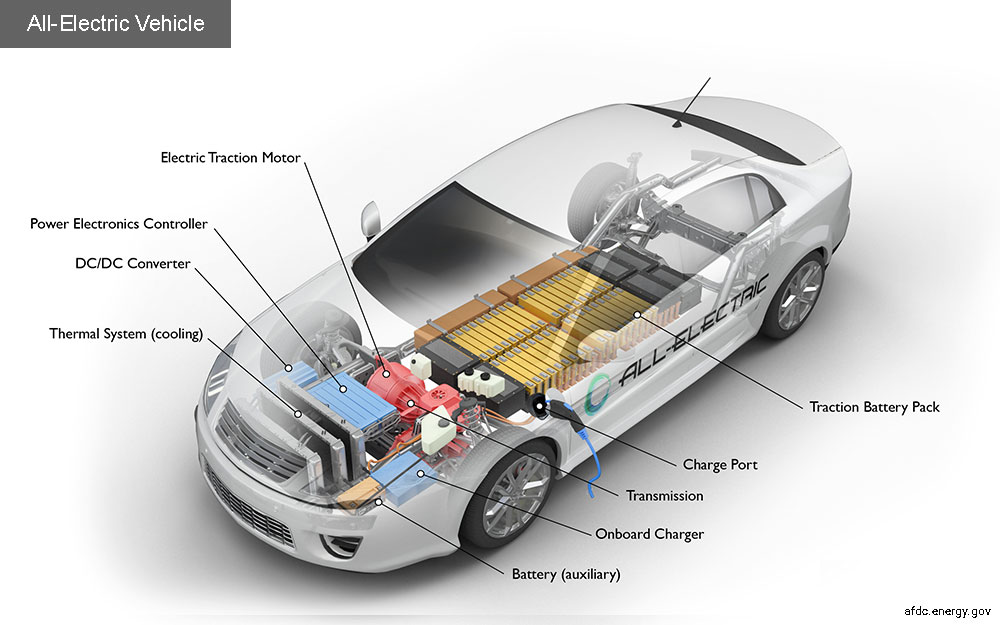
Components of an all-electric vehicle | credits: afdc.energy.gov These are the ones which you call a fully electric vehicle. This electric vehicle type does not contain any other source of actuation other than motors and batteries. There is zero-emission in these vehicles. The battery is charged through an external source of power such as DC fast charger or AC chargers.
On average, the BEVs take around 8 hours to get fully charged using an AC charger. This time can be reduced to 1 hour using a DC fast charger.
These electric vehicles have a range from 250kms to 500kms depending upon the battery capacity and the motor. Some of the 4-wheeler BEVs in India are Tata Nexon EV, Hyundai Kona Electric, Mahindra eKUV100, MG ZS EV and more. 2-wheeler BEVs in India include Ather 450, TVS iQube, Bajaj Chetak Electric and many other startups are planning to launch by the end of this year.
Have a look: Tata Nexon EV vs MG ZS EV vs Hyundai Kona Electric: Detailed Comparison -
Hybrid Electric Vehicle (HEV)
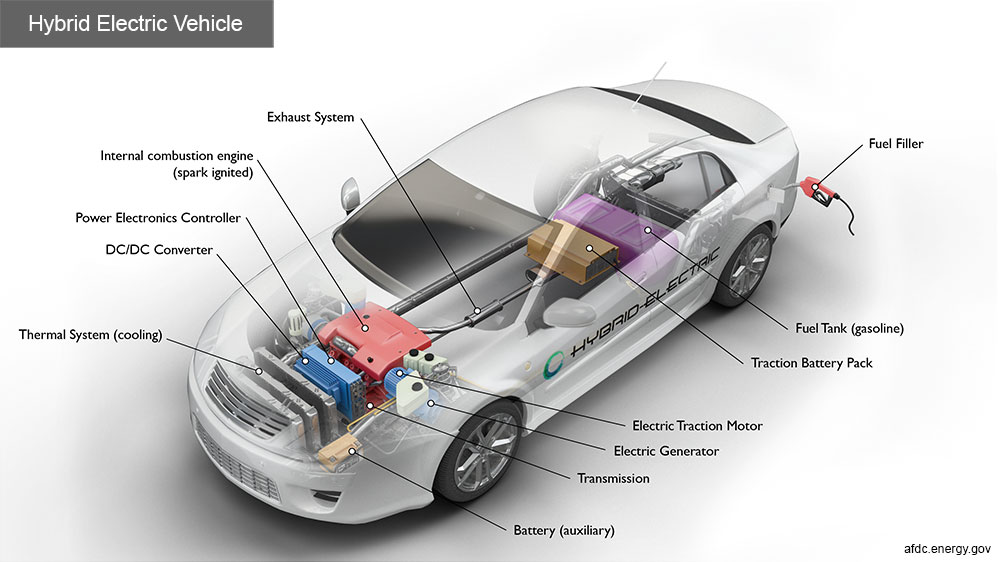
Hybrid Electric Vehicle | Types of electric vehicles | credits: afdc.energy.gov These type of electric vehicles are powered by both, fuel as well as electricity. The electricity is generated by the vehicle’s own braking system. The heat produced by the brakes is converted into electrical energy. This process of conversion is called Regenerative Braking.
The electric motor is used to start off the HEVs. Then the propulsion is taken care of by the IC engine. This ensures better fuel economy. The operation of the engine as well as the motor is controlled by the ECU. Some HEVs in India are Toyota Prius Hybrid, Honda Civic Hybrid and Toyota Camry Hybrid. Maruti Suzuki recently introduced its hybrid system in few models too. -
Plug-in Hybrid Electric Vehicle (PHEV)
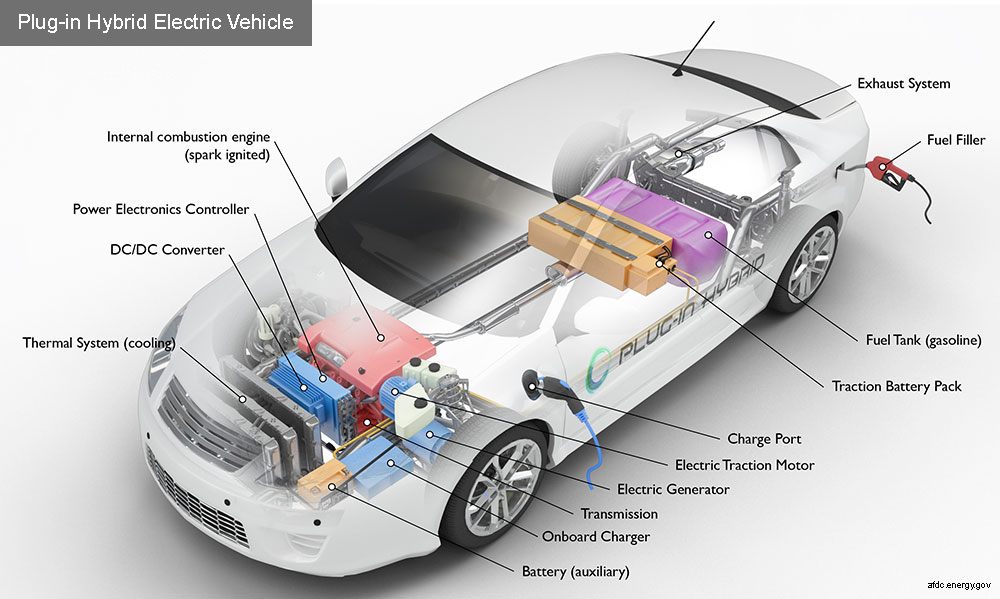
PHEVs | types of electric vehicles These are types of hybrid electric vehicles which can recharge the batteries through regenerative braking or through the external source of power. The HEVs travel about 3-4kms before the engine is switched on, PHEVs can go up to 65kms before the engine provides the required assistance for the propulsion of the vehicle. PHEV options available in India are Mahindra e-Verito, BMW i8 and the Volvo XC90 T8.
This is all you need to know about the electric vehicle working, its types and components. Did we miss anything? Tell us in the comment section below.






NICE
NICE
Thanks for reading. Stay pinned!
[…] where does the electricity for the electric motor come […]
The main concern becomes the battery. Are the guaranteed? How long? What is the replacement cost? Are there different batteries for the different systems you explained above ? What are their life span and ease of replacement.